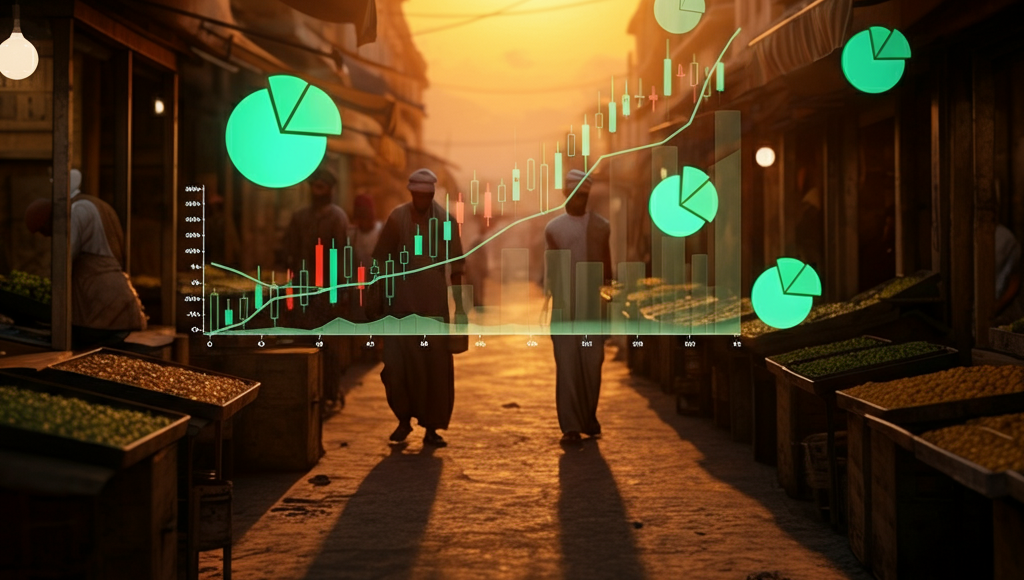When it comes to analyzing markets, one name is quickly gaining traction in discussions among eco-conscious investors and agricultural enthusiasts alike—Charalabush. A native plant with incredible versatility, Charalabush has made waves for its multiple applications, from medicinal uses to sustainable manufacturing. Its popularity, however, has led to pronounced price fluctuations, leaving farmers, suppliers, and consumers wondering what dictates these changes.
If you’ve been scratching your head over Charalabush price trends, you’re not alone. This blog will break down the complex factors driving Charalabush price fluctuations and help you make informed decisions, whether you’re sourcing this resource, growing it, or investing in its market.
What is Charalabush, and Why Does It Matter?
Before we get into the nitty-gritty of pricing, it’s essential to understand what makes Charalabush so unique. Charalabush is a fast-growing shrub predominantly found in semi-arid climates. Known for its high resilience in poor soil and low-water conditions, it’s become a darling of sustainable agriculture. Its applications are as diverse as its growing regions—used in herbal medicine, biodegradable packaging, cosmetic formulations, and even biofuel.
But here’s where it gets interesting—its demand isn’t just driven by its multiplicity in use; it’s also fueled by its role in environmental conservation. Many governments have started promoting Charalabush farming to combat soil erosion and desertification. The result? Skyrocketing demand and, as expected, fluctuating prices.
The Key Factors Affecting Charalabush Prices
1. Seasonal Harvest Cycles
Like most crops, Charalabush’s availability depends heavily on its growing and harvesting seasons. While it may be resilient, it still has specific periods when its yield is at its peak. These seasonal constraints lead to natural shifts in supply, impacting Charalabush prices across markets. For instance, during harvest season, you’re likely to see a temporary drop in the Charalabush price thanks to increased supply.
Pro Tip for Farmers: Use modern crop forecasting tools to better anticipate demand ahead of a harvest season.
2. Climate Events and Environmental Factors
Charalabush, though tough, is not immune to extreme weather events such as droughts, floods, or unexpected frost, all of which can significantly impact its cultivation. A poor harvest in one region often sends shockwaves through global supply chains, leading to sharp price increases.
To mitigate this, some entrepreneurs have resorted to controlled farming environments such as greenhouse cultivation, which, while costlier, stabilizes yield levels.
3. Rising Global Demand for Sustainable Materials
A major driver of recent Charalabush price fluctuations is the rising global demand for sustainable and eco-friendly materials. Industries like packaging and cosmetics are increasingly turning to this plant as a biodegradable alternative to traditional plastics and harmful chemicals.
The more companies begin to integrate Charalabush-based products into their supply chains, the higher its prices are likely to soar. For instance, a notable spike occurred in mid-2023 when several global brands launched eco-friendly packaging solutions using Charalabush fiber.
Are you an investor? Watch for emerging deals or announcements from industries incorporating Charalabush into their manufacturing processes.
4. Regional Policies and Subsidies
Governments play a pivotal role in influencing Charalabush prices. In regions where subsidies are provided to encourage cultivation, you may see prices stabilize due to increased supply. Conversely, import-export restrictions or increased tariffs in supplier nations can lead to sudden price hikes.
For buyers or suppliers, staying updated on trade policies in Charalabush-producing countries can provide valuable foresight.
5. Processing Costs and Labor Shortages
Raw Charalabush is only part of the equation—processing it into usable forms like powdered extracts or fiber adds to its final cost. Regions facing labor shortages or rising energy costs may see higher prices due to these ancillary expenses.
Automation technologies are now stepping in to reduce these effects, potentially leading to greater long-term price stabilization.
6. Speculation and Market Trends
Lastly, informed (and uninformed) speculation in the future market of Charalabush contributes to its price volatility. Traders often drive prices up or down in response to expected changes in supply or demand. For example, a buzz around “the next big green innovation” can cause short-term price spikes, even before demand truly materializes.
Investors, be proactive but cautious. While Charalabush has tremendous potential, data-backed decisions usually beat herd mentality.
The Global Impact and Future of Charalabush Prices
Charalabush’s increasing prominence signals a promising future in sustainable innovation, but price instability remains a balancing act. Experts predict that as new farming technologies mature and supply chains stabilize, the Charalabush price will eventually settle at a level that benefits both producers and end-users.
Developments in trade relations, climate-proof farming technologies, and industrial expansion in the plant-based materials market will likely determine the long-term trajectory of Charalabush pricing.
A Practical Tip for Buyers and Sellers
Buyers—lock in wholesale prices when markets are stable. Sellers—diversify your sales channels and keep informed on emerging demand trends.
Make Smarter Decisions Today
Understanding Charalabush price fluctuations doesn’t have to be overwhelming! By keeping an eye on supply and demand trends, along with external factors like weather and policies, you’re one step closer to navigating its market effectively. Whether you’re a grower, supplier, or eco-conscious consumer, now’s the time to tap into the many opportunities Charalabush affords.
Looking for further insights into emerging agricultural trends? Visit our blog for more resources and expert tips on navigating today’s most exciting green innovations.
Conclusion
The Charalabush market represents a dynamic intersection of sustainability, innovation, and economic opportunity. By staying informed about pricing patterns, market forces, and emerging trends, you position yourself to make well-informed, impactful decisions. Whether you’re cultivating the crop, trading it, or simply exploring its benefits, the Charalabush offers a promising path toward a greener, more connected future. Let’s work together to harness its potential and drive forward sustainable progress!
FAQs
What is Charalabush?
Charalabush is a versatile and resilient crop known for its environmental benefits and wide range of applications. From improving soil health to providing nutrient-rich products, it has become a sought-after resource in sustainable agriculture.
Why is Charalabush considered sustainable?
Charalabush thrives with minimal water and fertilizer, making it an eco-friendly choice. Additionally, its ability to prevent soil erosion and enrich the land promotes regenerative farming practices.
What are the main uses of Charalabush?
Charalabush can be used in numerous ways, including as a natural fertilizer, an ingredient in biodegradable products, and even as a source for dietary supplements. Its flexibility makes it a significant asset in various industries.
How can I get started with Charalabush farming?
Starting with Charalabush farming is easier than you might think! Begin by researching its growing conditions and sourcing quality seeds. It’s also valuable to network with experienced growers and take advantage of resources available on sustainable agriculture.
Where can I learn more about Charalabush and its market?
For a deeper dive into Charalabush pricing trends, cultivation tips, and innovative uses, make sure to visit our blog and explore our expert-curated resources. Stay tuned for updates to stay ahead in this burgeoning market!

















